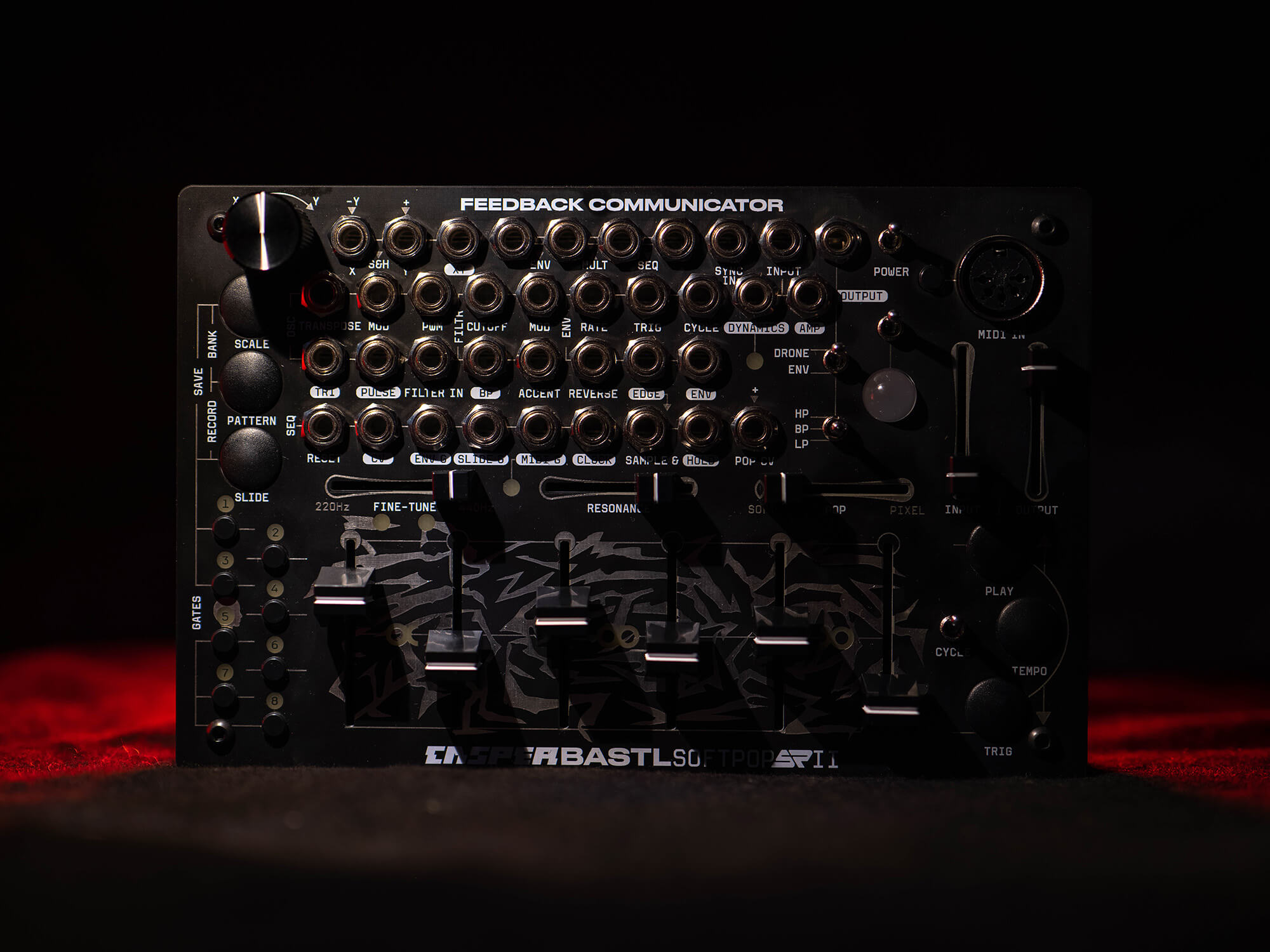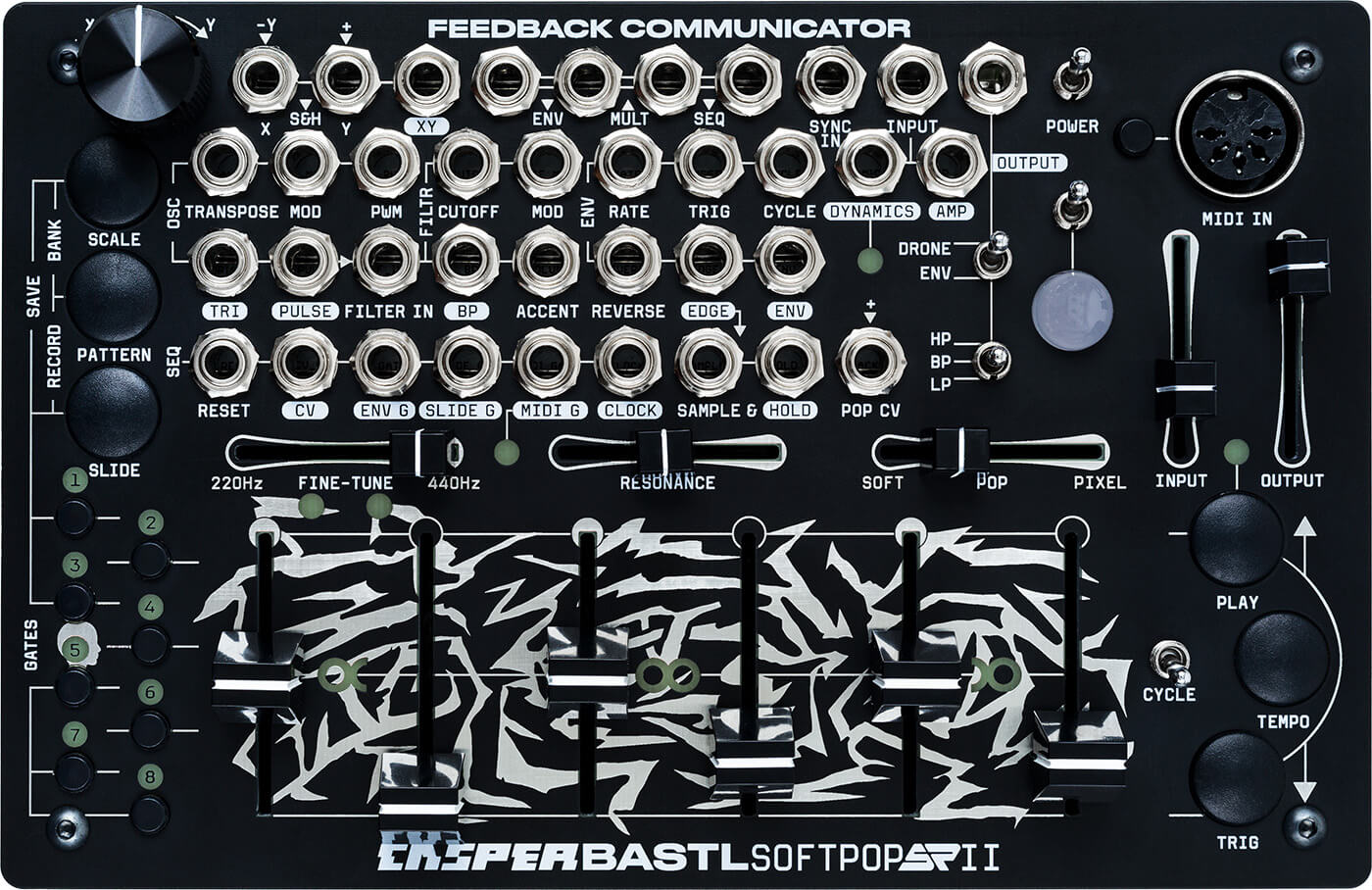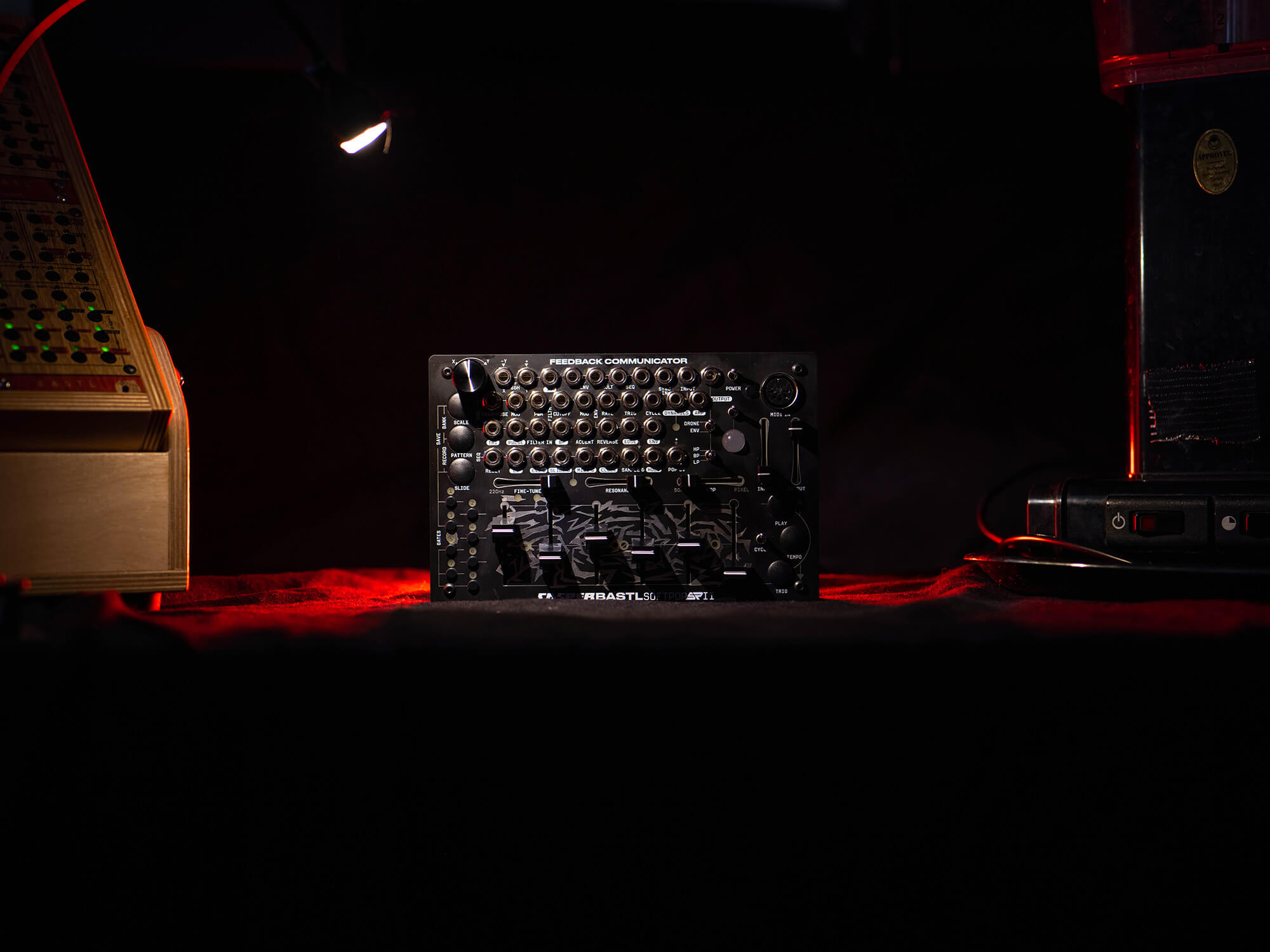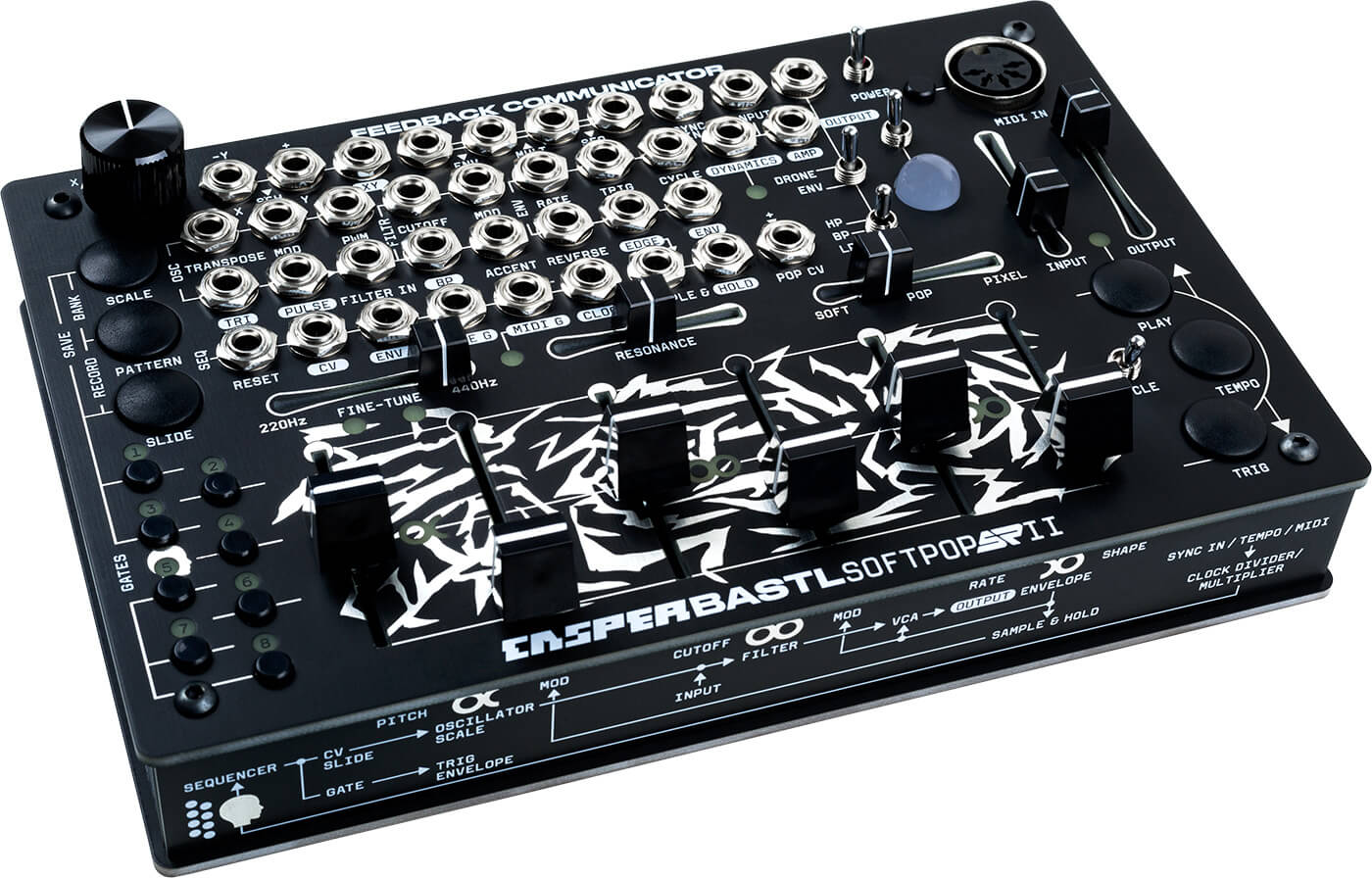Bastl Instruments Softpop SP2 review: A tiny terror, ten years in the making
The compact semi-modular ‘Feedback Communicator’ is “a rare beast that excels at both melody and noise in equal measure,” purportedly the developer’s best work to date. Does it live up to the hype?

Review Overview
Our rating
8
Our verdict
⊕ Huge range of sounds
⊕ Brilliant sounding filter
⊕ Great compact sequencer
⊖ Dense, slightly cramped layout
⊖ Patch bay not always clearly navigable
⊖ Awkward to have button combos and signal flow diagrams displayed on the bottom of the chassis.
The fact that Czech developer Bastl Instruments describes itself as a “a synth (trouble) maker” might serve as an apt precedent for the Softpop SP2. A miniature subtractive semi-modular, the SP2 was inspired by the late, great Rob Hordijk’s Benjolin synth and brought forth by a longstanding collaboration between Bastl Instruments and Casper Electronics— namely lead engineers Václav Peloušek and Peter Edwards. The SP2 boasts its own sequencer and oodles of modulation potential, promising something of a playground for lateral thinkers. It doesn’t so much blend digital and analogue architecture together as it does as mash them into one another, resulting in a rather special brand of signature sonic chaos.
Immediately noticeable upon unboxing is that the enclosure itself of the SP2 is tattooed up to the neck with a combination of signal flow diagrams and button combinations on every side except the back— including the bottom. “So you won’t get sucked into your phone while searching for the manual,” promises Bastl, although you may well get sucked into examining various panels of the SP2 and using said phone to illuminate its very small text. This said, it’s fairly useful, it looks cool and ultimately means you won’t have to commit the SP2’s many button combinations to memory, even if that does mean occasionally having to carefully extract it from your setup without dislodging the USB bus power cable and peering awkwardly at its underside.
The SP2’s interface is based around six sliders— ironically the only unlabelled controls on an otherwise densely labelled front panel— which from left to right control pitch (through a chosen scale, cleverly), pitch modulation, filter cutoff, filter cutoff modulation, envelope cycle rate (with an accompanying ‘cycle’ toggle switch) and envelope shape over two stages (attack and release). Smaller sliders for fine VCO tuning, filter resonance, audio input and master output level are also present, as well as a curious, eponymously named ‘pop’ slider, which moves between the extremes of ‘soft’ and ‘pixel’. More on that shortly.
The left side of the SP2’s panel presents an 8-step sequencer that crams a formidable amount of performability and functionality into a space measuring about two inches by one. Various button combinations (many of them also using buttons over on the right hand side of the panel, which is a good use of space, making for easy two-handed control) allow for recording and playback of sequences as you’d expect, but there’s also step editing, pattern recall and chaining, user-definable quantising, step-specific portamento and more. There’s even a very handy live ‘effects’ section for on the fly latching of various characterful articulations of your sequence, such as retrigger, tremolo and noise. Impressive.
Up at the top left of the panel is an ‘X/Y’ knob, which either functions as a crossfader between the signals patched to the respective X and Y patch inputs, or can be patched into almost any parameter for easy tactic control between -2 and +2V. It’s a welcome addition on an instrument like this; along with the six central sliders it is successfully prioritised as a control for use in a performative setting, with the smaller controls better suited for finer tweaking of sounds.

The top right of the panel presents a traditional 5-pin MIDI input— a reminder that yes, this is a highly capable, playable mono synth in its own right— and toggle switches to select one of three filter modes, as well as drone latching. A multicoloured LED-driven light, affectionately dubbed The Orb in the manual, provides a surprisingly useful visual cue to what’s going on. Just in case it becomes irritating, Bastl has also included a little on/off switch all of The Orb’s own. Cute.
Beyond all this are the SP2’s patch points. Many, many patch points. These of course open up the scope of the SP2 exponentially, allowing endless routing fun with almost every imaginable parameter and of course fluid compatibility with all manner of external Eurorack gear. Truth be told, though, in many cases (this one included), dense clusters of sockets can make it hard to differentiate between different circuits and their labels, leading to much quizzical peering and threatening patching mistakes that are hard to retrace, even for an experienced user. In the case of the SP2, with its compact size and already busy chassis (graphically as well as functionally) this aspect of the layout does make the interface feel very crowded and a little daunting on first impression. It’s a good example of how an instrument may well be impressively portable, but an extra inch or two of panel space would by no means take away from that portability while potentially benefiting its playability considerably.

Bastl, of course, would doubtless argue that keeping patch points together and out of the way of other controls is a design decision that makes performance easier. This, it’s fair to say, is true; as the SP2’s workflow becomes more familiar, things begin to make more sense and— we’re pleased to say— a more fluid workflow begins to develop.
The filter is arguably what provides most of the SP2’s sonic soul. It sounds great, and while the resonance circuit never quite strays into truly wild territory, it can still self-oscillate and it’s got character, which is the primary currency with instruments like this. The aforementioned Pop slider encapsulates many of the SP2’s foundational principles, gradually moving from ‘soft’, or what Bastl calls a “plain vanilla” filter resonance response, through “more liquid type” filtering and towards ‘pixel’, to produce more angular digital, almost bit-crushed sounds. This, we’re told, is done by feeding a version of the oscillator’s pulse wave to the cutoff frequency, resulting in an interesting sort of quasi-FM, analogue-imitating-digital character. The filter here is both smooth and keenly responsive: it can be wet and watery or growling and punchy, really ‘ripping’ through the frequency spectrum in a way many filters just don’t. A very impressive sounding circuit, the filter is undoubtedly a major asset to the SP2.
As mentioned, the Softpop SP2 is a lateral thinker’s paradise. It begs for its own rules to be broken, promising sonic rewards. In this way it also might just be the ideal semi-modular entry point into the world of Eurorack at large, so well does it do away with purism and encourage its various functions to be thought of as open-ended tools. There are hurdles here, to be sure, but when it comes to that most important thing— the sound— the SP2 is more than worth it.

Key Features
- Compact semi-modular synth
- USB-powered, MIDI-controllable
- Onboard sequencer
- Cycling envelope and drone latching options
- ‘Pop’ slider can dial in signature crushed filter effect
- Extensive patch bay, compatible with external Eurorack gear.
- Contact Bastl Instruments
- Buy: DV247, Bastl Instruments